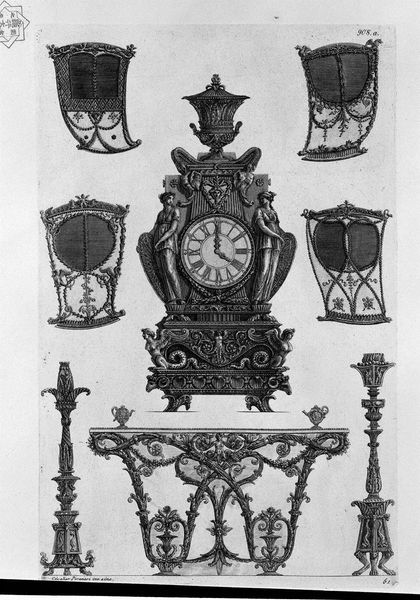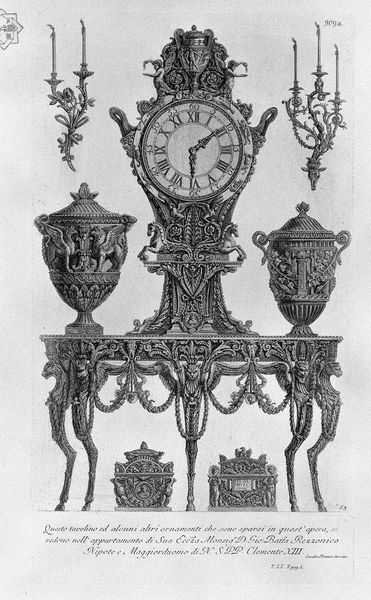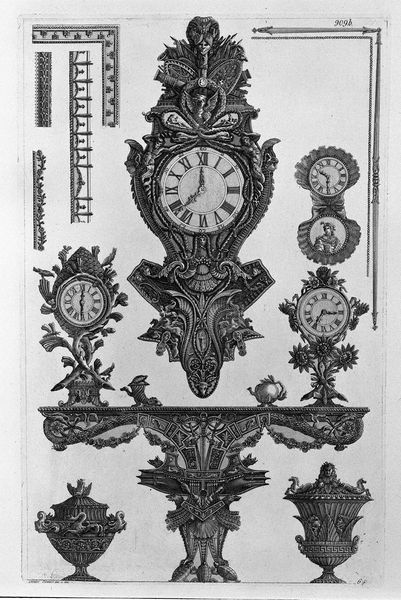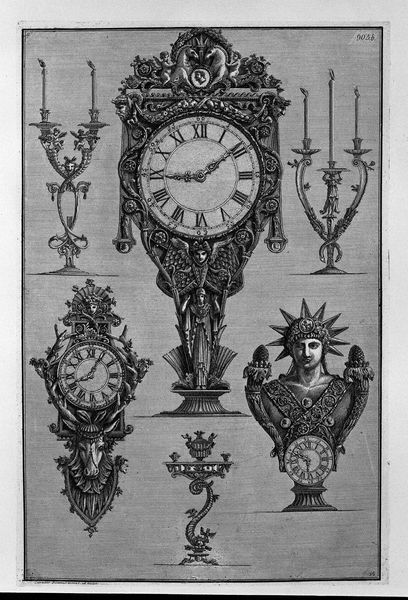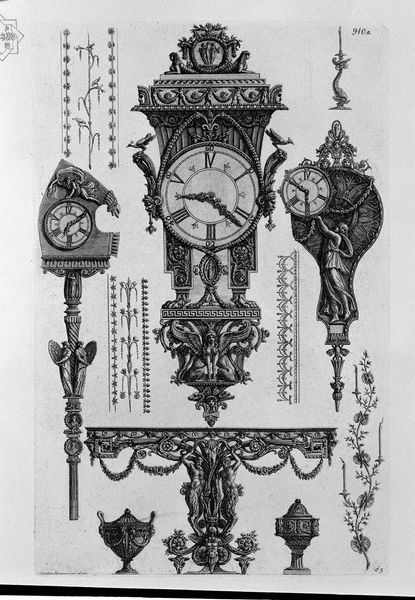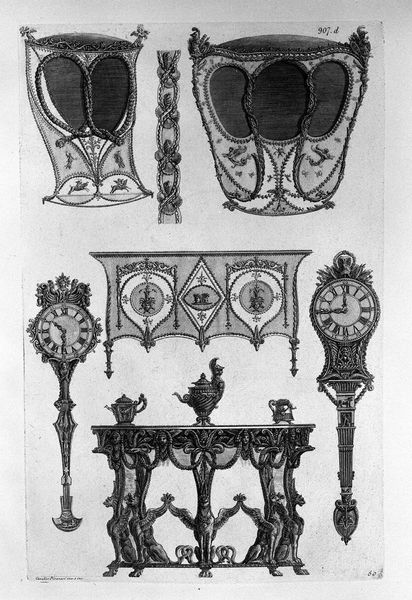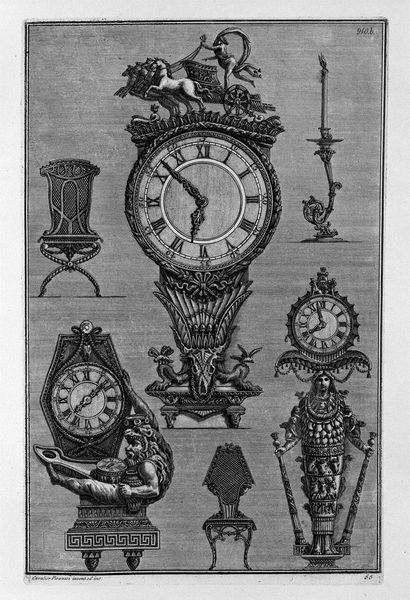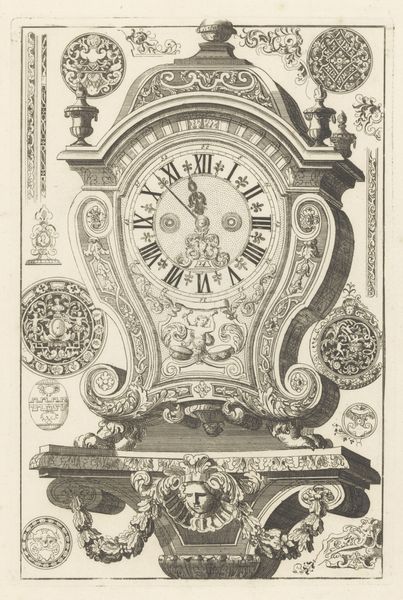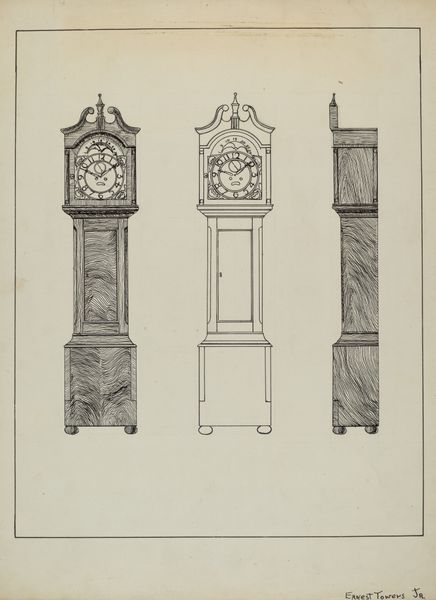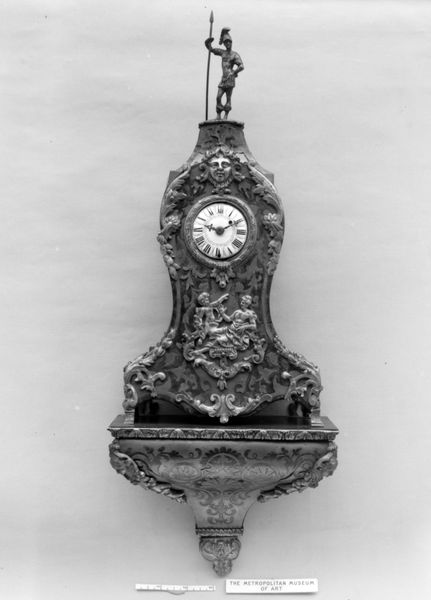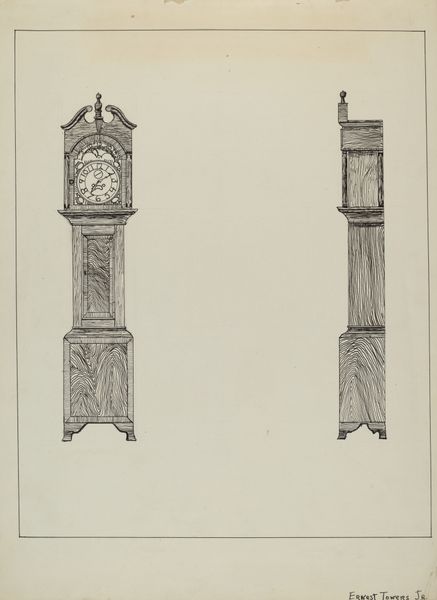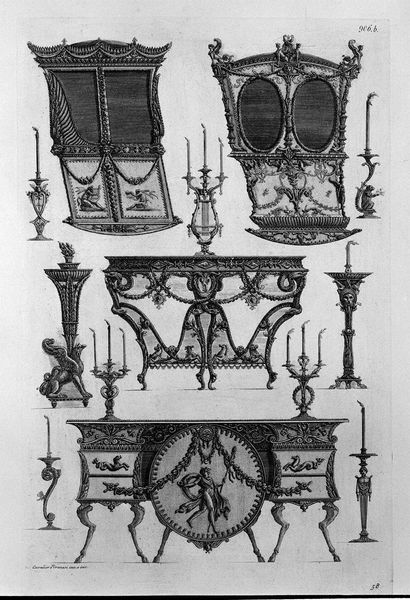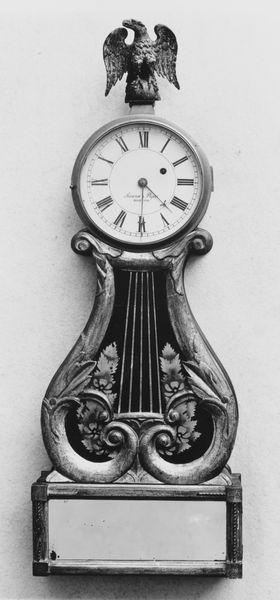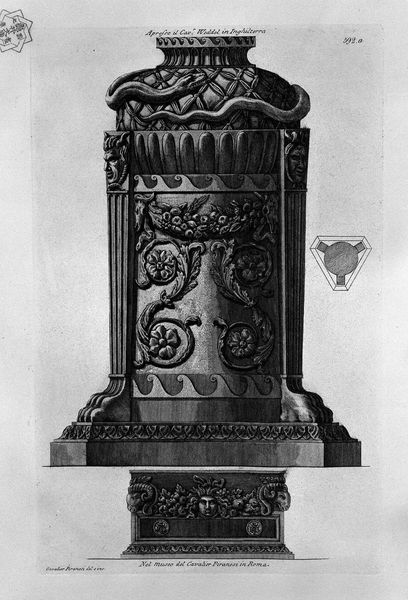
drawing, print, etching, glass
#
drawing
#
baroque
# print
#
etching
#
glass
Copyright: Public domain
Editor: This etching by Giovanni Battista Piranesi, titled "Two clocks and a chair, Two sides of the sedan, and a chest," is quite striking. The level of ornamentation is really intense. What is your take on this piece? Curator: I see this print as a potent visual statement about the values and power structures of the Baroque era. The overwhelming ornamentation, far from being merely decorative, signals wealth, status, and control. Think about the societal context – who owned such elaborate objects? What did their ownership communicate? Editor: So, it’s not just about aesthetics; it’s about societal power dynamics. Curator: Exactly. Each flourish and decorative motif acts as a symbol, reflecting the intersection of art and socio-political standing. The clocks, for example, weren't merely time-keeping devices. Time itself became a commodity, controlled by those who could afford these extravagant pieces. And how might we analyze the symbolism of the sedan chairs, given that their design quite literally centers and frames the body within the mechanisms of transit? Editor: I see what you mean. It's about controlling movement and the perception of self in relation to power. Curator: Precisely. And in our contemporary lens, we can critique these historical manifestations of power and exclusivity and hopefully spark dialogue about how objects and designs still play a role in constructing societal hierarchies. It challenges us to question what values we assign to objects today. Editor: It makes you consider the social implications. Thanks for pointing that out; I hadn't really thought about it in that way. Curator: My pleasure. Art like this is powerful because it serves as a tangible record of shifting societal values, sparking necessary dialogue.
Comments
No comments
Be the first to comment and join the conversation on the ultimate creative platform.
